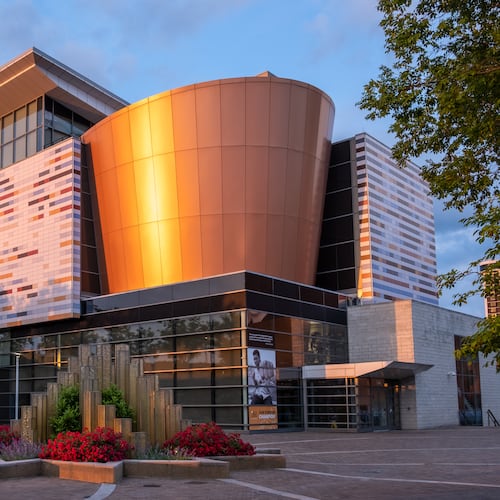Malcolm Bird of Louisville, Ky., has two great passions in life — art and architecture. He takes pride in the fact that he was able to use the former to salvage the latter by organizing Louisville’s first St. James Court Clothesline Art Show in 1957. Bird, 82, gathered a few local artists who hung their paintings from a clothesline in St. James Court in an attempt to raise funds for some much-needed improvements in the neighborhood he loved.
Today the juried St. James Court Art Show, held annually in “Old Louisville” the first weekend of October, is among the largest in the country. The clothesline was replaced long ago by some 700 exhibitor booths that feature a variety of art pieces, including bronze sculptures, mosaic tile furniture, handcrafted jewelry and one-of-a-kind African dolls.
Despite its name, the show extends well beyond St. James Court and into Belgravia Court and adjacent neighborhoods. Proceeds go toward maintaining Old Louisville, the nation’s third-largest historic preservation district, boasting 48 blocks of Gilded Age Victorian mansions.
In the late 19th century, the area was home to Louisville’s wealthiest, most elite citizens. Unlike the “Painted Ladies” in other American Victorian neighborhoods, these homes are constructed almost entirely of stone or brick. No two structural silhouettes are exactly the same in this virtual outdoor museum of Victorian architecture.
Bird has lived in the area for more than 50 years, and he says in the 1950s, long before the neighborhood was restored, the view from his window was a depressing one.
“It was a pretty destitute area. Some houses were divided into apartments that had absentee landlords,” he said. “The area looked like it needed love.”
There was no curb around the center green of St. James Court, so cars and trucks parked there regularly, leaving behind scorched brown spots, dashing Bird’s dreams of lush grass and flowers in bloom.
But what disturbed him most was the deteriorating St. James Court Fountain that had marked the center of the Southern Exposition, a five-year series (1883-1887) of World’s Fairs that is one of Louisville’s most historically significant events.
“The iron fountain was rusting away, and it was tilted,” Bird recalled. “Somebody had put posts under the bowl of the fountain to support it.”
Bird decided if he could make a go of the art show, the fountain would be high on his list of restoration projects. It took years, but the fountain, which is topped by an exquisite statue of Venus, was beautifully restored and recast in bronze to prevent future rusting.
In the meantime, Bird and a couple of friends who shared his appreciation for fine architecture, began renovating several of the crumbling Victorian homes. As the neighborhood improved, others started doing the same. Soon, stained glass started reappearing in previously boarded windows, and sagging porches and balconies were repaired.
The thousands of visitors that flock to the St. James Court Art Show every fall may not realize it, but as they stroll beneath a canopy of brilliant fall foliage while flanked by stunning examples of almost every genre of Victorian architecture, they are benefiting from Bird’s efforts all those years ago.
When they grow tired of wandering from booth to booth, many visitors make their way to Central Park to catch their second wind. Like everything in Old Louisville, there’s historic significance to this park formerly known as DuPont Square because it was part of the DuPont family estate in the late 1800s.
It was here that the world was introduced to Thomas Edison’s light bulb. During the Southern Exposition of 1883, thousands of incandescent light bulbs illuminated the park, creating quite a stir throughout the city and around the world. It explains why Old Louisville was one of the first electrically lit neighborhoods in the country.
The Conrad Caldwell House, a historic house museum on St. James Court, is an Old Louisville highlight, and many art show enthusiasts stop in for a tour. Known to locals as “Conrad’s Castle,” this towering, three-story stone mansion with its gargoyles and turrets is a fine representation of Richardsonian Romanesque architecture. Since most homes in the neighborhood are privately owned and rarely open for tours, the Conrad Caldwell House offers the best opportunity to see the interior of a renovated Old Louisville home.
Or follow the lead of many art show exhibitors and stay at one of Old Louisville’s historic bed-and-breakfasts. The 1888 Historic Rocking Horse Manor and DuPont Mansion are restored Victorian houses with period antiques and furnishings.
The joy visitors take in the art show — and the historic area that hosts it — gives Bird great pleasure.
“It’s hard to imagine it was once so derelict,” Bird said of Old Louisville. “I love it. I couldn’t imagine living anywhere else.”
About the Author
The Latest
Featured
